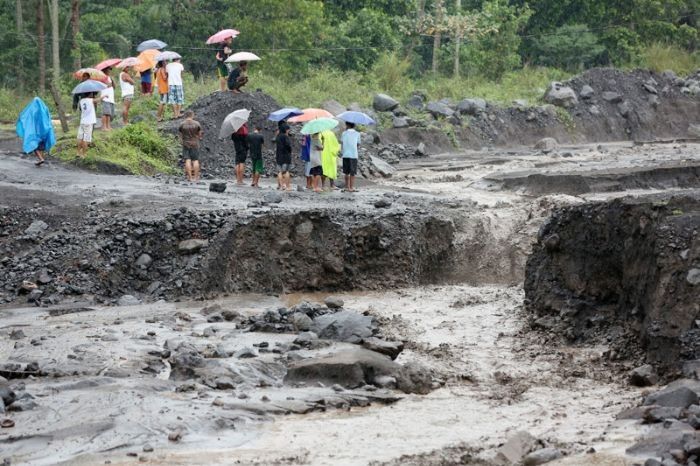No lahar from Mayon yet, but Phivolcs doesn’t rule out possibility

MANILA, Philippines —No reports of lahar from Mayon Volcano have emerged after several days of rain, but state volcanologists have urged caution, as the possibility remains.
In a public briefing on Thursday, December 26, Philippine Institute of Volcanology and Seismology (Phivolcs) Director Teresito Bacolcol said.
“Ngayon po, wala po tayong naiulat na lahar dulot ng shear line. Although hindi na masyadong maulan sa Legazpi ngayon, patuloy pa rin nating pinapayuhan ang ating mga residente lalo na ang mga nakatira malapit sa mga ilog na umaagos pa mula sa dalisdis ng Mayon na manatiling mapagmatyag,” he said.
(For now, there are no reports of a lahar due to the shear line. Although it is not raining in Legazpi today, we advise our residents near the river that flows from Mayon to remain vigilant.)
Bacolcol said that if rains persist, lahar could still be possible.
The Philippines has had a rainy holiday season due to the combined effects of the shear line and the northeast monsoon.
A lahar is a mudslide formed from water, volcanic ash, and rocks, according to the Phivolcs director.
Bacolcol warned that lahars can travel rapidly and have the power to destroy houses and structures in their path. He cited Super Typhoon Reming in 2006, which triggered a lahar in Albay that claimed around 1,200 lives.
State volcanologists have identified the following areas that a lahar could hit:
- Miisi Channel
- Binaan Channel
- Anoling
- Quirangay
- Maninila
- Masarawag
- Muladbucad
- Nasisi
- Mabinit
- Matan-ag
- Bulawan
- Basud Channels
In the event of a lahar, citizens should immediately head to the nearest evacuation centers.
“Huwag na ngang tangkaing tumawid o lumapit pa sa mga ilog na posibleng daluyan ng lahar; and ang pinakaimportante ay makipag-ugnayan po sila sa mga local authorities para sa agarang tulong at impormasyon,” Bacolcol said.
(Do not try to cross or approach a river that a lahar might flow through; the most important is to coordinate with local authorities for immediate aid and information.)
Mayon Volcano is continuously active, which is why it is always at least at Alert Level 1, Bacolcol explained.
- Latest
- Trending
























